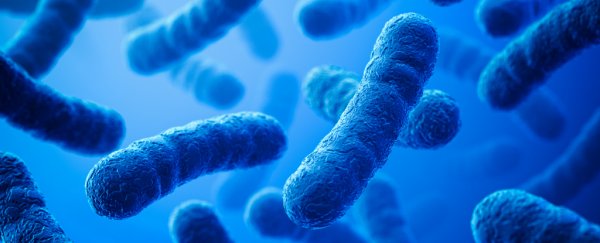Antibiotic resistance is one of the most urgent threats to global health, and already, the crisis is claiming more lives than you probably think.
In Europe, the death toll from superbugs is staggering. New research estimates that each year, 33,000 people die in the European Union and the European Economic Area, and these deaths are a direct consequence of just five types of resistant infections.
The threat that this poses to modern health care is no small matter. The researchers say the burden of these infections, including mortality and financial cost, is comparable to that of influenza, tuberculosis and HIV/ AIDS combined.
What's more, 75 percent of this burden is due to infections that are picked up in healthcare settings. This suggests that hospitals and other healthcare settings are not properly preventing or controlling the spread of these superbugs.
But while there are solutions that can reduce the spread of infections, treating them is another matter. Because for many of these infections, we are on our last line of defence.
In Europe, researchers found 39 percent of the burden was caused by infections that are resistant to last-line antibiotics, such as carbapenems and colistin.
This is a worrying increase from 2007 levels, and it means that more and more people are contracting expensive, dangerous and difficult-to-treat infections.
And this isn't just confined to Europe. It's happening all over the world. If nothing is done to halt the rise of superbugs, global deaths from drug-resistant infections could rise from the currently estimated 700,000 every year to 10 million people every year by 2050.
The thought is terrifying, but some of the best minds in the world are putting their heads together to try and solve this problem.
So far, scientists have already come up with more than 8,000 new antibiotic combinations - a mix of one or more drugs - that have proved surprisingly effective against resistant bacteria.
They've also created whole new classes of antibiotics. For instance, one new class uses synthetic retinoids that are chemically related to Vitamin A. When the medicine was tested on animals, it was able to kill one of the deadliest pathogens on the planet without any resistance.
Another class works like a stealthy assassin, sneaking past the membranes that protect gram-negative bacteria like a Trojan Horse, and killing the infection from the inside out. The drug may only be in phase II human trials, but so far it looks like a promising solution to a wide range of multi-drug resistant pathogens, including bacteria resistant to carbapenems.
We still have a long way to go - that's for sure - but new drugs like these might be able to buy us some time.
As we wait for scientists to strike gold and stock up our antibiotic arsenal, it's crucial that we take steps to reduce the impact and limit the spread of resistance. Hundreds of thousands of lives are at stake.
This study has been published in The Lancet Infectious Diseases.
